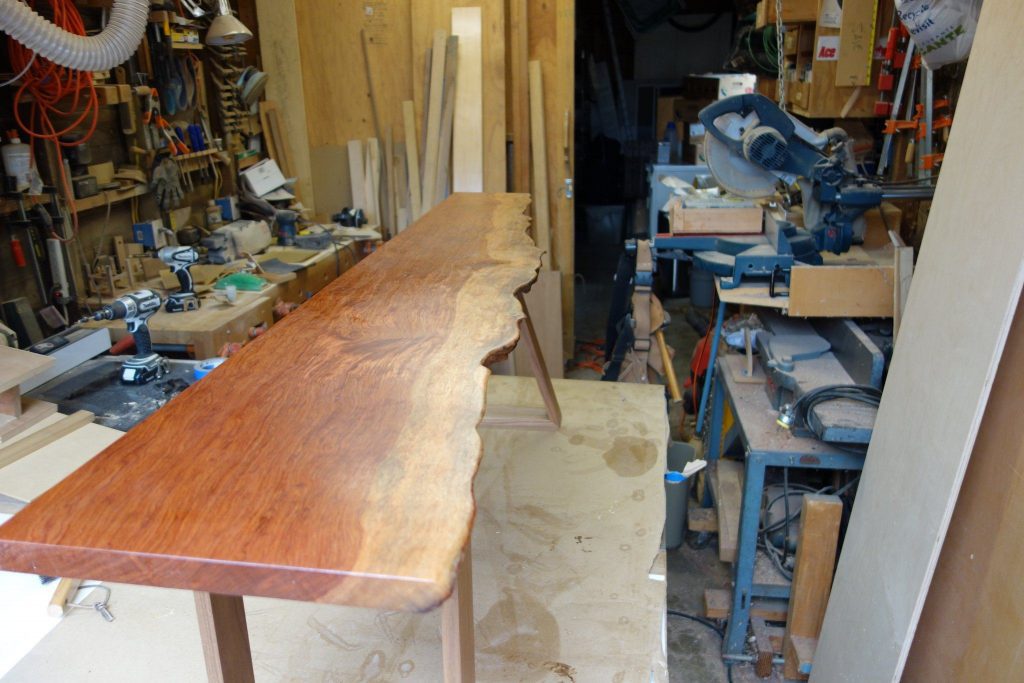Padauk is a beautiful wood with intense reddish hues. Cut from the tree bearing the same name, the wood starts a bright red, darkening to a reddish-brown, almost purple color over time. This color change can be slowed somewhat by the application of finishes that have been developed to protect the wood from ultraviolet rays. Some people confuse it with rosewood, redder than the more expensive wood. This species of wood is the most often mispronounced due to its spelling. Phonetically, it is pronounced as if it were spelled puh-down.
Most of the padauk wood we find is of the African variety, although there is also a variety from Burma, which is more complex and expensive. Still, the appearance is very similar. The grain of this wood is very open, with a porous end grain. Grain lines are rather obvious, with the grain interlocking at times. This can make it challenging to work with, although it is highly stable once worked.
The padauk tree grows in the tropical parts of central and western Africa. Mature trees range from 100 to 130 feet tall, with a trunk 2 to 4 feet in diameter. It is challenging, with a Janka hardness rating of 1,970 lbs. That’s roughly 50% harder than oak and a little more complicated than rosewood, but only about 2/3 as hard as ebony. The padauk is not endangered in any way, so there is no shortage of the wood or risk that it will no longer be allowed to be imported.
However, padauk is relatively inexpensive for imported hardwood, which, along with its unique coloration, makes it a reasonably popular wood amongst woodworkers. It is commonly used for turned objects, musical instruments, furniture, and small wood items, such as tool handles. A rather unique use of padauk is in making marimbas (wooden xylophones), which are traditionally made of rosewood. Padauk provides good resonance and sound without the high cost of rosewood, making it a good choice for lower-cost marimbas used for practice or in the home. The sound produced by a padauk marimba is not as loud as that produced by a rosewood one. Commercially, padauk is also used in the manufacture of flooring.

When working with padauk, one will quickly notice that it has a faint, pleasant odor when cut. However, some people do have allergic reactions to it when working with it, especially respiratory symptoms. This can be reduced by avoiding dust from this wood, specifically through wearing a good mask or respirator. The hardness can also make it challenging to work with, especially when planning the end grain.
The hardness of this wood also provides the advantage of making the wood highly resistant to decay and damage from wood-eating insects. Few woods are immune to wood-eating insects, but padauk is resistant. This makes it ideal for applications susceptible to moisture or insect attacks.
Padauk wood is not complicated to find from wood suppliers specializing in domestic and imported hardwoods. Many vendors sell it in thin boards, which are popular for detail work and some crafts-type woodworking projects. Most suppliers define it as “exotic lumber,” although the pricing isn’t as high as most exotic hardwoods. Plywood is more rigid to come by but is available.




